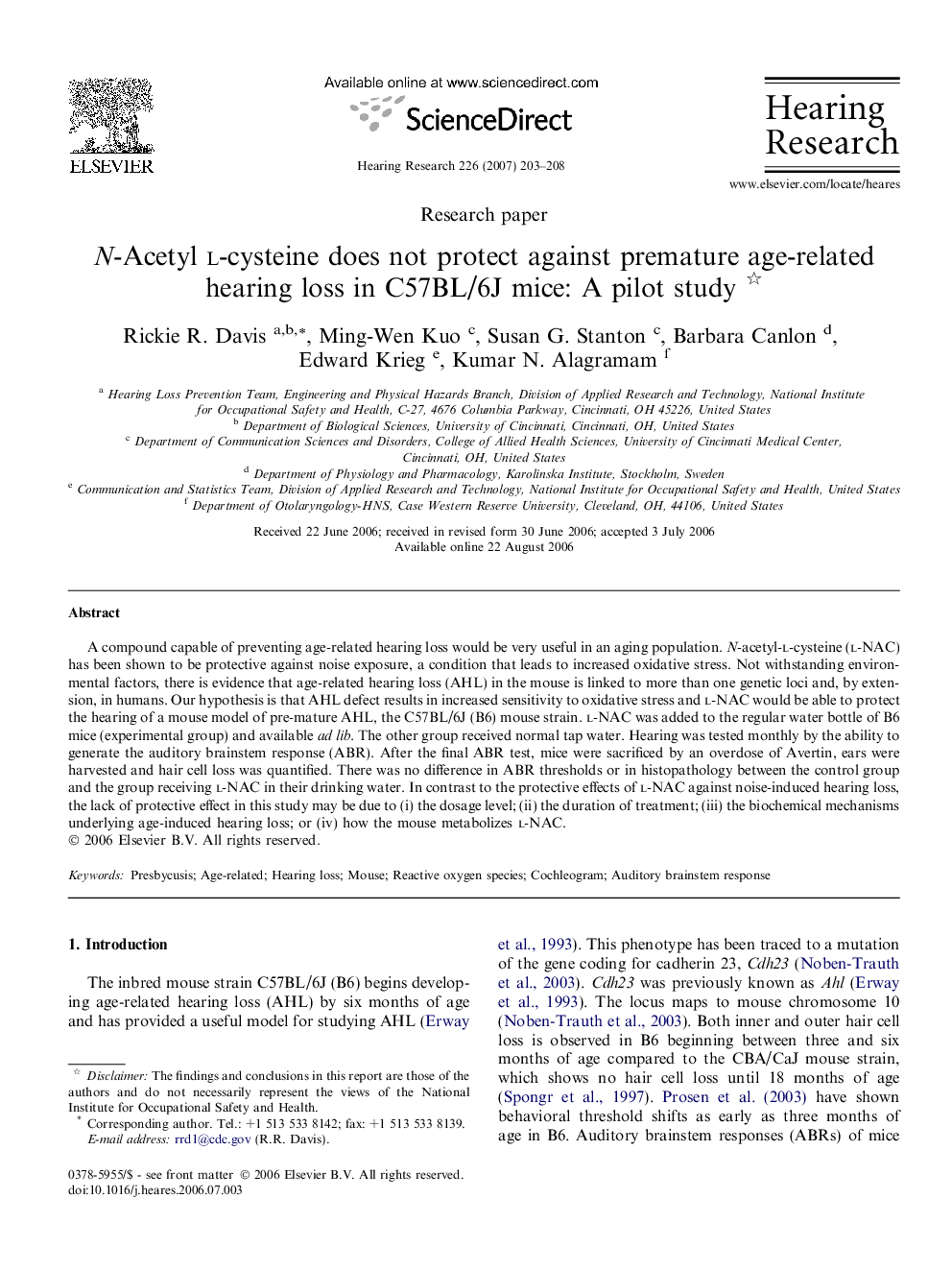| Article ID | Journal | Published Year | Pages | File Type |
|---|---|---|---|---|
| 4356333 | Hearing Research | 2007 | 6 Pages |
A compound capable of preventing age-related hearing loss would be very useful in an aging population. N-acetyl-l-cysteine (l-NAC) has been shown to be protective against noise exposure, a condition that leads to increased oxidative stress. Not withstanding environmental factors, there is evidence that age-related hearing loss (AHL) in the mouse is linked to more than one genetic loci and, by extension, in humans. Our hypothesis is that AHL defect results in increased sensitivity to oxidative stress and l-NAC would be able to protect the hearing of a mouse model of pre-mature AHL, the C57BL/6J (B6) mouse strain. l-NAC was added to the regular water bottle of B6 mice (experimental group) and available ad lib. The other group received normal tap water. Hearing was tested monthly by the ability to generate the auditory brainstem response (ABR). After the final ABR test, mice were sacrificed by an overdose of Avertin, ears were harvested and hair cell loss was quantified. There was no difference in ABR thresholds or in histopathology between the control group and the group receiving l-NAC in their drinking water. In contrast to the protective effects of l-NAC against noise-induced hearing loss, the lack of protective effect in this study may be due to (i) the dosage level; (ii) the duration of treatment; (iii) the biochemical mechanisms underlying age-induced hearing loss; or (iv) how the mouse metabolizes l-NAC.
